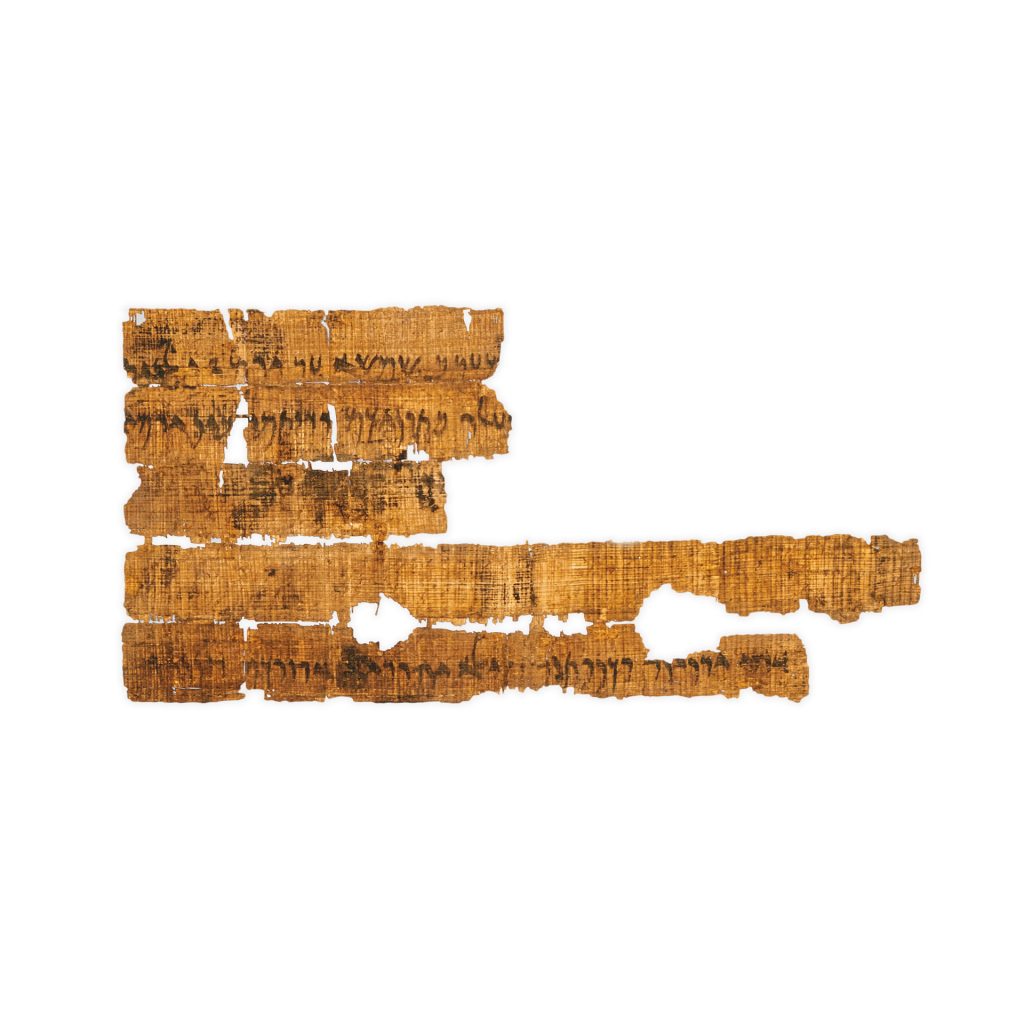The Passover Papyrus
Elephantine, Egypt, 419 BC
Original at the Egyptian Museum and Papyrus Collection, Berlin State Museum, SPK
Must Know
This papyrus, written in Aramaic, seems to offer guidance for the observance of the festival of Passover. It was sent to the Jewish garrison stationed by the Persian kingdom on the island of Elephantine, where it defended its borders. This papyrus seems to be a letter from Hananiah to Yedaniah (the leader of the Elephantine Judean community) and gives a detailed account of the yearly Passover celebrations. It was sent to the Jewish garrison community on the island of Elephantine (ancient Yeb), located on the Nile river in Egypt.
This papyrus is part of a collection of documents that chronicle the Jewish community of Elephantine in the time of the Persian Achaemenid rule over Egypt between 495-399 BCE. It gives us a glimpse of how traditional Judaism was practiced in the fifth century.
More Info
Papyrus is a thick paper (made from the papyrus plant) that was used as a writing surface in ancient times for documents and letters.
Throughout this particular letter, familiar Jewish practices are mentioned that are associated with Passover such as not working and not eating leavened bread. Additionally, it mentions seven days in Nisan where Jews must eat unleavened bread. Nisan is the seventh month in the hebrew calendar (closely correlating with the months of March and April) and the month of the exodus of the Jewish people from slavery in Egypt, representing the story of the Jews told over Passover every year.
Some scholars believe that, in the face of opposition against the Elephantine Jewish community at the time, the Passover papyrus may have been a written consent to the continuation of Passover celebrations. The papyrus is fragmented and means we cannot know its purpose and contents with certainty.

